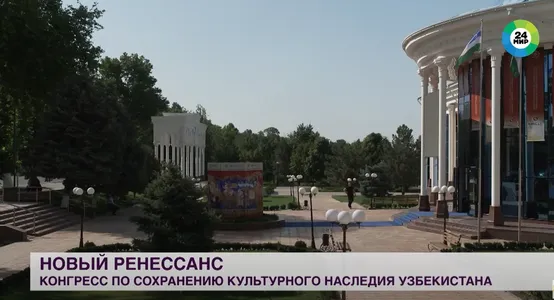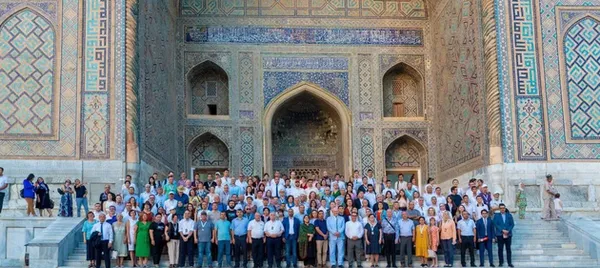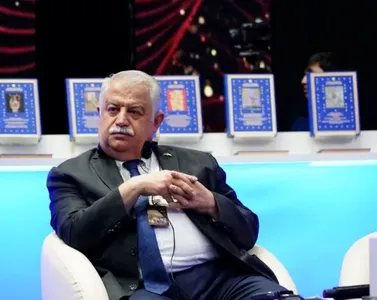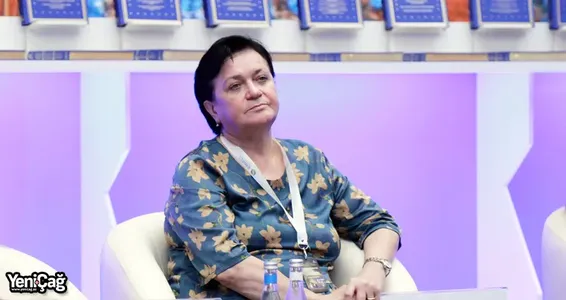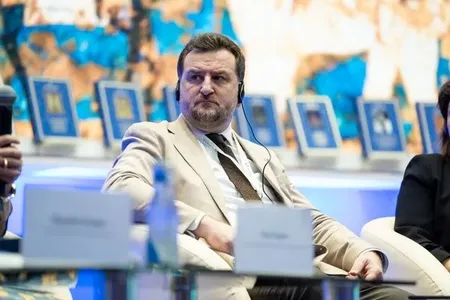На этой неделе Британский музей выставил на обозрение шесть больших эпиграфических глазурованных плиток, которые были изъяты пограничными силами Великобритании в аэропорту Хитроу в 2020 году. Джонатан Уильямс, заместитель директора музея, заявил, что они «изысканно красивы и напоминают культуры Центральной Азии» и «[открывают] окно для общественности в необычайно богатое культурное наследие Узбекистана».
Обстоятельства, которые привели к выставке, составили бы хороший сюжет криминального романа. Пассажир из Дубая был помечен как имеющий подозрительный характер полета и был перехвачен по прибытии в Лондон. Он нес чемодан, содержащий плитку, но без одежды, и представил ложное заявление, в котором говорилось, что он купил копии, «сделанные так, чтобы выглядеть старыми» в Шардже накануне. Он утверждал, что заплатил за них всего 315 DH (около 70 фунтов стерлингов), что составляет часть истинной черной рыночной стоимости плитки, поскольку они очень коллекционны и находятся в отличном состоянии. К счастью, сотрудники пограничных сил обучены выявлять признаки контрабанды во всех ее формах. Плитки были переданы в Британский музей для проверки и конфискованы импортером.
Д-р Сент-Джон Симпсон, куратор Отдела Ближнего Востока Британского музея, отвечает за разработку процесса, с помощью которого украденные или незаконно продаваемые древности, идентифицированные музеем, могут быть выставлены, опубликованы и репатриированы в страны их происхождения. За последнее десятилетие Симпсон и его коллеги помогли вернуть домой более 2 500 предметов. В этом конкретном случае девять экспертов из семи стран единогласно пришли к выводу, что плитка пришла из Мавераннахра (регион с центром в современном Узбекистане, но включающий части Казахстана, Кыргызстана и Таджикистана). Трехцветная глазурь изразцов — белая, бирюзовая и кобальтово-голубая — является отличительной чертой Чагатайского ханства и датируется ими с конца 13-го до середины 14-го веков. Специалисты считают, что по крайней мере часть плитки пришла из Шах-Зинда, великолепно украшенного некрополя, который является частью Всемирного наследия ЮНЕСКО Самарканда. Раскопки и реставрационные работы проводились в Шах-Зинде в 1996 и в начале 2000-х годов, и ряд глазурованных артефактов, найденных в это время, остаются пропавшими без вести.
“It is unfortunate that such pieces of our cultural heritage have been smuggled,” said HE Said Rustamov, Uzbekistan’s Ambassador to the UK, at the ceremony marking the tiles’ first public appearance. “But it is fortunate that Uzbekistan has such wonderful friends and partners, including the British Museum and UK Border Force, to identify and return our cultural heritage.” The tiles will be on show at the British Museum until 1 August 2021, and will then be handed over to the Government of Uzbekistan. Simpson hopes that it will be possible to identify the exact place that they came from in Uzbekistan and to exhibit them there.
This is the second time in recent years that the British Museum has been able to identify and successfully repatriate tiles to Uzbekistan. A glazed tile from the Chashma-i Ayub in Vobkent, stolen in 2014, turned up for sale in a Mayfair gallery and was spotted by an Oxford scholar in a catalogue. It was returned to Uzbekistan in 2017 to be put back in situ on the facade of the 13th century monument it was prised from.
Uzbekistan’s relationship with the British Museum, which includes a new memorandum of understanding to collaborate on research and training, as well as antiquities trafficking, is indicative of the country’s growing commitment to cultural heritage preservation and promotion. Uzbekistan has more than 8,000 cultural heritage sites, including five UNESCO World Heritage Sites, and, as President Mirziyoyev told parliament at the end of last year, “We need to preserve and pass on to future generations the cultural heritage of our people.” Formation of identity and education of youth — today and tomorrow — are pressing considerations in a country where the median age of the population is just 27.8 years (compared to 40.5 years in the UK).
As part of his wider social and cultural reform agenda, in June 2021 Mirziyoyev created a new Cultural Heritage Agency under the Ministry of Tourism and Sports led by Deputy Prime Minister Aziz Abdukhakimov. Its initial budget of 420 billion soums (approximately £28.5 million) will be invested not only in the protection of physical sites, but also developing museum activities, supporting archeological research, and building international partnerships. He noted that in the past there has sometimes been a “negligent attitude towards this issue,” but that going forward there would be greater engagement not only from the Ministry of Culture but also from local khokimiyats (municipal governments), the media, and the general public.
Engagement with international partners is essential, too, as Uzbekistan builds capacity and roles out best practice within its institutions. The Cooperation Programme signed between Mirziyoyev and Audrey Azoulay, Director General of UNESCO, in 2018 is flourishing. The agreement covers a wide range of topics, from education and media literacy to biodiversity and the preservation of Uzbekistan’s tangible and intangible cultural heritage. UNESCO’s International Cultural Forum, “Central Asia at the Crossroad of World Civilisations”, will take place in Khiva in September, and is expected to attract around 300 participants. Bukhara has applied to be recognised as a UNESCO City of Literature, and it is hoped that a number of the sites currently on Uzbekistan’s Tentative List will soon be granted World Heritage Site status.
Many of Uzbekistan’s partnerships and activities are being coordinated by the Art and Culture Development Foundation (ACDF), which sits within the Ministry of Culture. Some of their projects are domestic, such as the reconstruction of the State Museum of Art and the creation of the Centre for Contemporary Arts in Tashkent, but others are focused on building relationships and increasing cultural engagement abroad. Thanks to ACDF, Uzbekistan has a national pavilion for the first time at this year’s Venice Biennale. It is an interdisciplinary installation exploring life and identity in Uzbekistan’s mahallas (urban neighbourhoods). A series of high profile international exhibitions are on the way in 2022: “Splendour of Central Asia: On the Caravan Routes of Uzbekistan” will be held at the Louvre Museum; the James Simon Gallery in Berlin has scheduled “The Heritage of Central Asia: Kushan Civilisation” exploring Uzbekistan’s history from the conquests of Alexander the Great to the rise of the Kushan Empire; and an elaborate Silk Road exhibition will be staged at the Arab World Institute in Paris and then at the National Museum of China in Beijing. Discussions are also underway with the British Museum to bring some of Uzbekistan’s treasures to London in a future Silk Road exhibition.
Организация «Культурное наследие Узбекистана», возглавляемая Фирдавсом Абдухаликовым, фокусируется на изучении, сохранении и продвижении культурных ценностей. Он идентифицирует связанные с Узбекистаном рукописи, хранящиеся в зарубежных коллекциях, синхронно как Британскую библиотеку и Бодлианскую библиотеку, многие из которых ранее не были оцифрованы или опубликованы, и делает факсимильные копии для архивов. «Культурное наследие» также руководит крупным проектом по изданию книг и документальных фильмов «Культурное наследие Узбекистана в мировых коллекциях», демонстрируя материальные объекты, обычаи и традиции англоязычной, русской и узбекоязычной аудитории.
В сентябре этого года Узбекистан отметит 30-летие независимости. Видение Мирзиёевым страны на этом символическом этапе — это то, что он называет «Третьим Возрождением», и в пространстве культуры и наследия Узбекистан шагает к этой цели. Как и в случае с Ренессансом в средневековой Европе, период больших социальных изменений оказывается благодатной почвой для развития искусства. Собственное прошлое Узбекистана является не менее богатым источником вдохновения, чем история Древней Греции и Рима, и нынешняя матрица институтов и деятельности в стране и за рубежом вполне может оказаться трамплином для творческого Золотого Века.
https://rsaa.org.uk/blog/research-reform-and-renaissance-in-uzbekistans-cultural-heritage/

